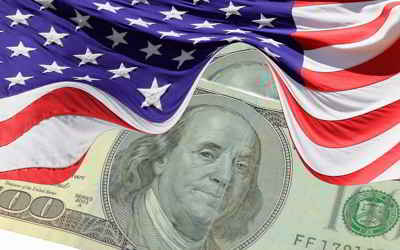New York Economy
Agriculture and Industry in New York
New York economy is a set of human and social activities and institutions related to the production, distribution, exchange and consumption of agriculture and industry goods and services. The balance between New York various economic sectors differs largely between various regions and other states in the US.New York Agriculture and Industry
New York's real gross state product in 2012 was estimated to be $1,038,541 which was $851,101 and 454% and 6 times higher than the national state average, $187,440. New York has the 3rd highest GSP out of the 50 states.
New York has been a leader in industry and in the national economy since the earliest times. Robert Fulton invented the first steam-powered ship
in 1809, and this new technology began a new era in transportation. Soon after, in 1825, the completion of the Erie Canal connecting the Great Lakes
with the harbor in New York City allowed trade across the state to flourish and a number of cities grew up along these trade routes. By the 1880s,
a system of roads and turnpikes across the state increased New York's ability to move goods along with the railroads that had become an important addition
to the state economy.
Today, the great metropolis of New York City is the nerve center of the nation. It is a leader in manufacturing, foreign trade, commerce and banking,
book and magazine publishing, and theatrical production. A leading seaport, its John F. Kennedy International Airport is one of the busiest airports
in the world. New York is also home to the New York Stock Exchange, founded in 1789, the largest in the world. The printing and publishing industry
is the city's largest manufacturing employer, with the apparel industry second.
The state ranks seventh in the nation in manufacturing, with the principal industries printing and publishing, industrial machinery and equipment,
electronic equipment, and instruments. The convention and tourist business is also an important source of income.
New York farms produce cattle and calves, corn and poultry, and vegetables and fruits. The state is a leading wine producer.
New York Agriculture:
Dairy products, cattle and other livestock, vegetables, nursery stock, apples.
New York Industry:
Printing and publishing, scientific instruments, electric equipment, machinery, chemical products, tourism.
New York City dominates the economy of the state. It is the leading center of banking, finance and communication in the United States and is the location of the New York Stock Exchange (NYSE) on Wall Street, Manhattan. The Bureau of Economic Analysis estimates that in 2004, the total gross state product was $900 billion, second only to California. If New York were a Nation, it would rank as the 16th largest economy in the World, behind South Korea. The state economy grew 4.7%, slightly faster than the 4.3% for the US. Its 2004 Per Capita Personal Income was $38,333, placing it 5th in the nation, and 6th in the World. New York's agricultural outputs are dairy products, cattle and other livestock, vegetables, nursery stock, and apples. Its industrial outputs are printing and publishing, scientific instruments, electric equipment, machinery, chemical products, and tourism.
Many of the world's largest corporations locate their headquarters home offices in Manhattan or in nearby Westchester County, New York. The state also has a large manufacturing sector which includes printing, garments, furs, railroad rolling stock, and bus line vehicles. Some industries are concentrated in upstate locations also, such as ceramics (the southern tier of counties) and photographic equipment (Rochester).
There is a moderately large saltwater commercial fishery located along the Atlantic side of Long Island. The principal catches by value are clams, lobsters, squid, and flounder. There used to be a large oyster fishery in New York waters as well, but at present, oysters comprise only a small portion of the total value of seafood harvested. Perhaps the best known aspect of the
Greetings from New Yorkfishing sector is the famous Fulton Fish Market in New York City, which distributes not only the New York catch, but imported seafood from all over the world. The Fulton Fish Market has been moved from Fulton Street in Manhattan to The Bronx.
New York's mining sector is concentrated in three areas. The first is near New York City. Primarily, this area specializes in construction materials for the many projects in the city, but its also contains the emery mines of Westchester County, one of two locations in the USA where that mineral is extracted. The second area is the Adirondack Mountains. This is an area of very specialized products, including talc, industrial garnets, and zinc. It should be noted that the Adirondacks are not part of the Appalachian system, despite their location, but are structurally part of the mineral-rich Canadian Shield. Finally in the inland southwestern part of the state in the Allegheny Plateau is a region of drilled wells. The only major liquid output at present is salt in the form of brine; however, there are also small to moderate petroleum reserves in this area.
New York exports a wide variety of goods such as foodstuffs, commodities, minerals, manufactured goods, cut diamonds, and automobile parts. New
York's top 5 export markets in 2003 were Canada $9B, United Kingdom $3.3B, Japan $2.6B, Israel $2.4B, and Switzerland $1.8B. New York's largest imports
are Oil, Gold, Aluminum, Natural Gas, Electricity, rough diamonds, and Lumber.

US economy is relies on private decision-making ("economic freedom")




